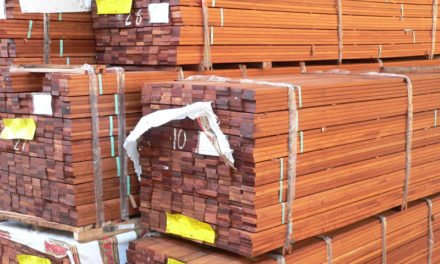An overview of the key proposed AS 1684 series amendments 2020.
AS 1684 Residential Timber Framed Construction, also commonly referred to as the Timber Framing Code, is the principal Australian Standard covering design criteria, building practices, tie-downs, bracing and span tables for timber framing members.
The AS 1684 Parts 2 and 3 released in 2010 have been the subject of a recent review, and a draft of the standard including the proposed amendments was placed on public review on 1 April 2020, with comments closing on 3 June 2020.
Parts 2 and 3 both cover design and construction details for non-cyclonic (N) and cyclonic (C) areas respectively. Four wind classifications are covered in Part 2, including N1, N2, N3 and N4. For Part 3, C1, C2 and C3 are covered.
The amendments contained within these drafts may be subject to change but the amendments to date are:
- Connection details of 45mm roof battens have been added. This amendment now provides tie-down capacities for 45mm roof battens commonly used by industry.
- Connection details for fixing a timber roof frame to masonry wall construction. This data was made necessary because AS 4773.1 now shows and gives a capacity to a tie-down strap embedded in the masonry with it disappearing upwards above the top course with the note: “Fix in accordance with AS 1684.”
Prior to this amendment, AS 1684 did not provide fixing guidance for tie-downs to masonry walls. - Sheet bracing capacities in Table 8.18 have been reformatted to change the default frame joint strength to JD5 in lieu of JD4. This amendment reflects the fact that most common MGP 10 available in the market contains heart-in material and thus places it in the JD5 joint group, requiring a 12.5% reduction in capacity by the standard. At first glance, it may appear to users of these tables that sheet bracing capacities have simply been reduced.
Under this amendment, any practitioner who is designing with framing with a JD4 joint group (MGP 10 with heart excluded and MGP12 or above) can increase the tabled value by the 12.5%, thus maintaining the status quo. - Notch and hole requirements for studs. The existing standard did not distinguish between load bearing and non-load bearing walls when considering holes and notches. Designers will appreciate this section being split into loadbearing and non-load bearing walls, with larger holes and notches now accepted in studs that do not support roof or floor loads.
- Flooring and decking. Industry perception is that the current provisions with the standard contained some errors, and also ambiguity surrounding the application of solid timber flooring on different substructures.
This part of the standard has been extensively reworked to reflect current research and experience which is able to provide for a quieter and more robust floor.
The list above is simply a snapshot of a small portion of the proposed changes designed to whet the appetite of users of AS 1684 to research what the revisions may mean for a project that they are considering.
Standards by their nature attempt to catch up with industry innovation rather than lead it. A standard only reflects current best practice to the extent that industry members involve themselves in keeping the standards current.
Any new items within these documents are draft only. Until such time that this new standard is finally published, any referencing to them should be made with caution.
It is a common misconception that an Australian Standard, despite possibly being bound in a yellow cover with a title that includes the word “Standard”, possesses some regulatory authority on its own. Unless that standard is referenced by legislation, regulations that accompany legislation, a legally enforceable contract or similar, it has little legal authority.
What makes this standard different?
The NCC is Australia’s primary set of technical design and construction provisions for buildings. As a performance-based code, it sets the minimum required level for the safety, health, amenity, accessibility and sustainability of certain buildings. It primarily applies to the design and construction of new buildings.
While there are three (3) volumes of the NCC, only NCC volume 2, which primarily covers the design and construction of smaller scale buildings including houses, small sheds, carports and some associated structures has been discussed here.
Compliance with the NCC is achieved by complying with:
- The governing requirements of the NCC; and
- The performance requirements.
It is via the performance requirements of the NCC that the AS 1684 series of Australian Standards is prescribed in Schedule 4 Table 1 as a Reference Document, and thus gains the status of a “deemed to satisfy Solution”.
This document is therefore fundamental to the domestic building industry and all building practitioners operating within this space should have an intimate knowledge of the requirements contained within. Building Surveyors will use relevant documentation and mandated inspections before providing certification that the structure is built according to this standard.











